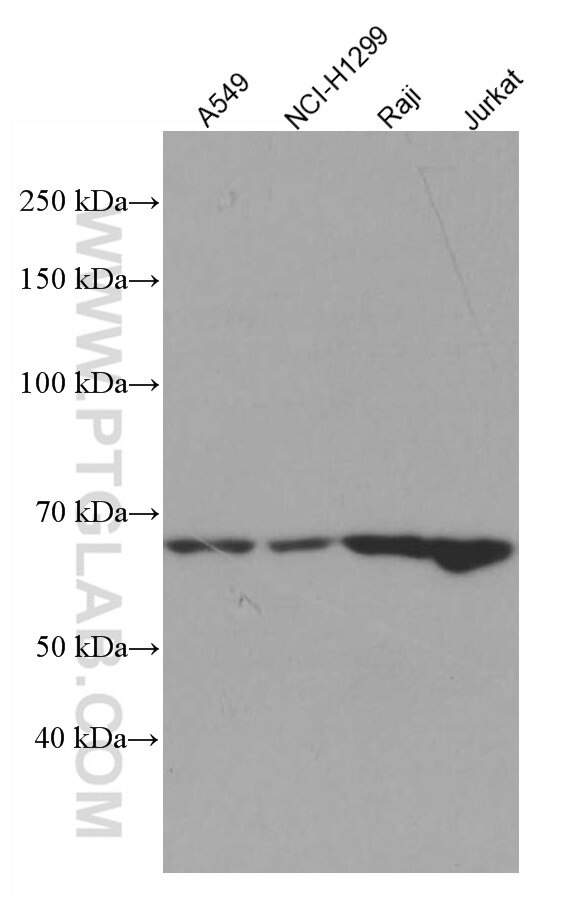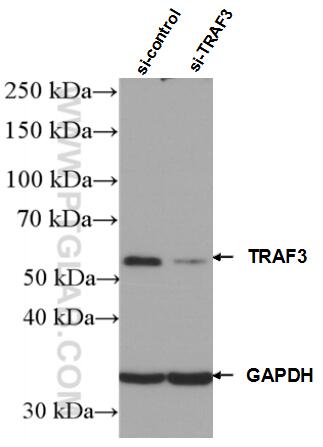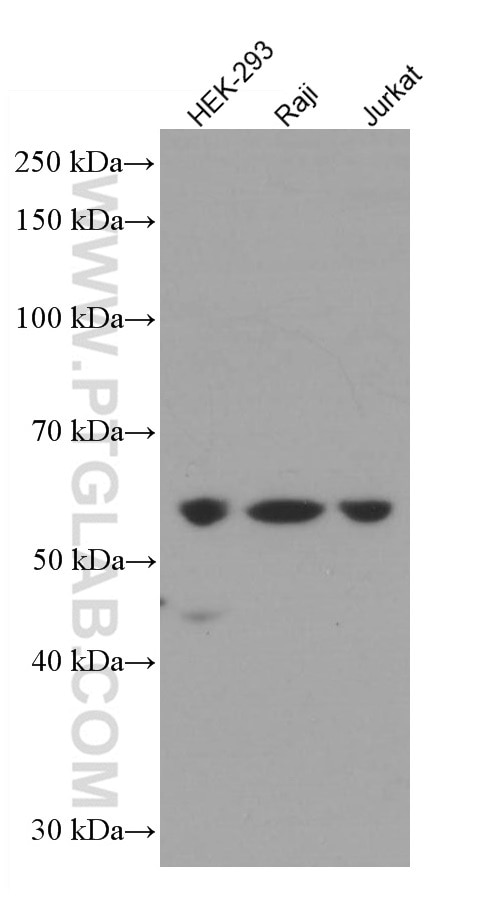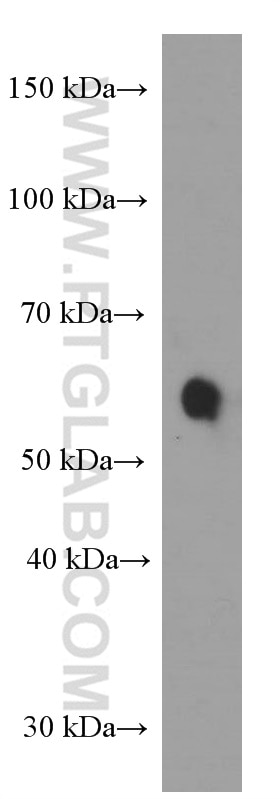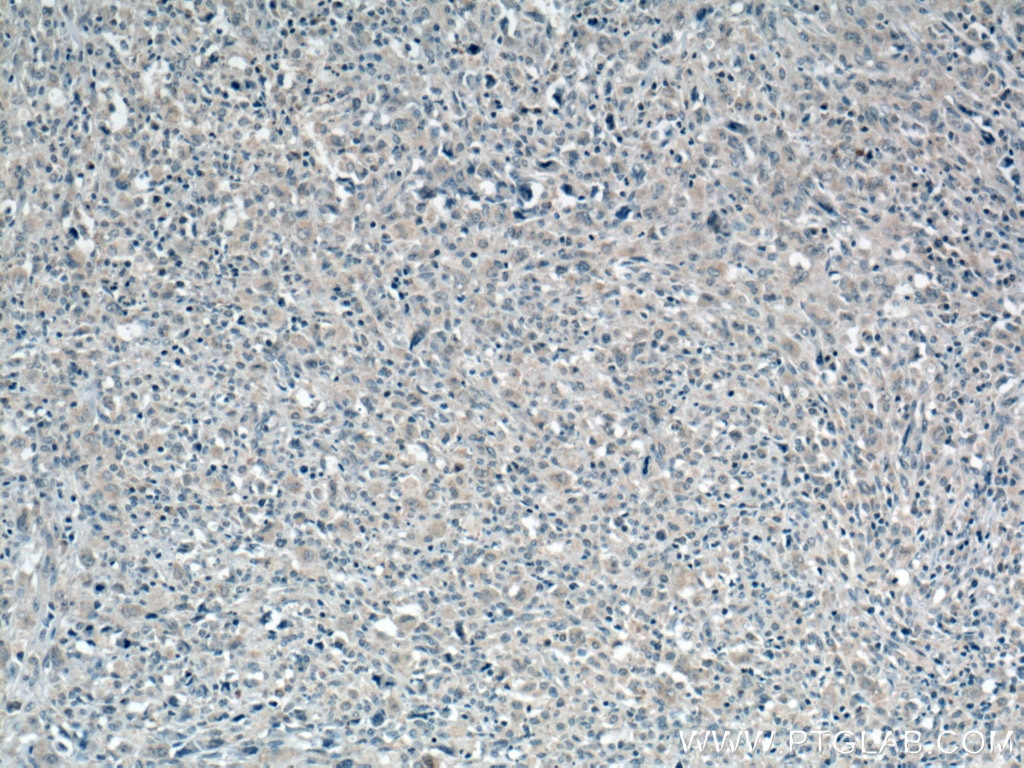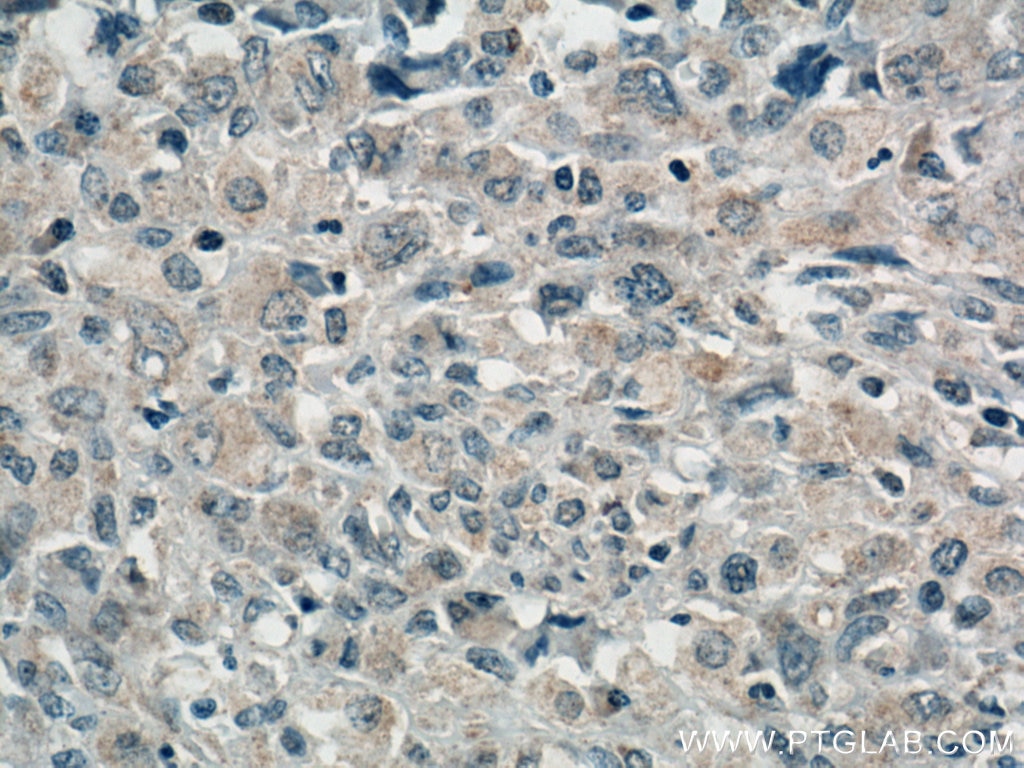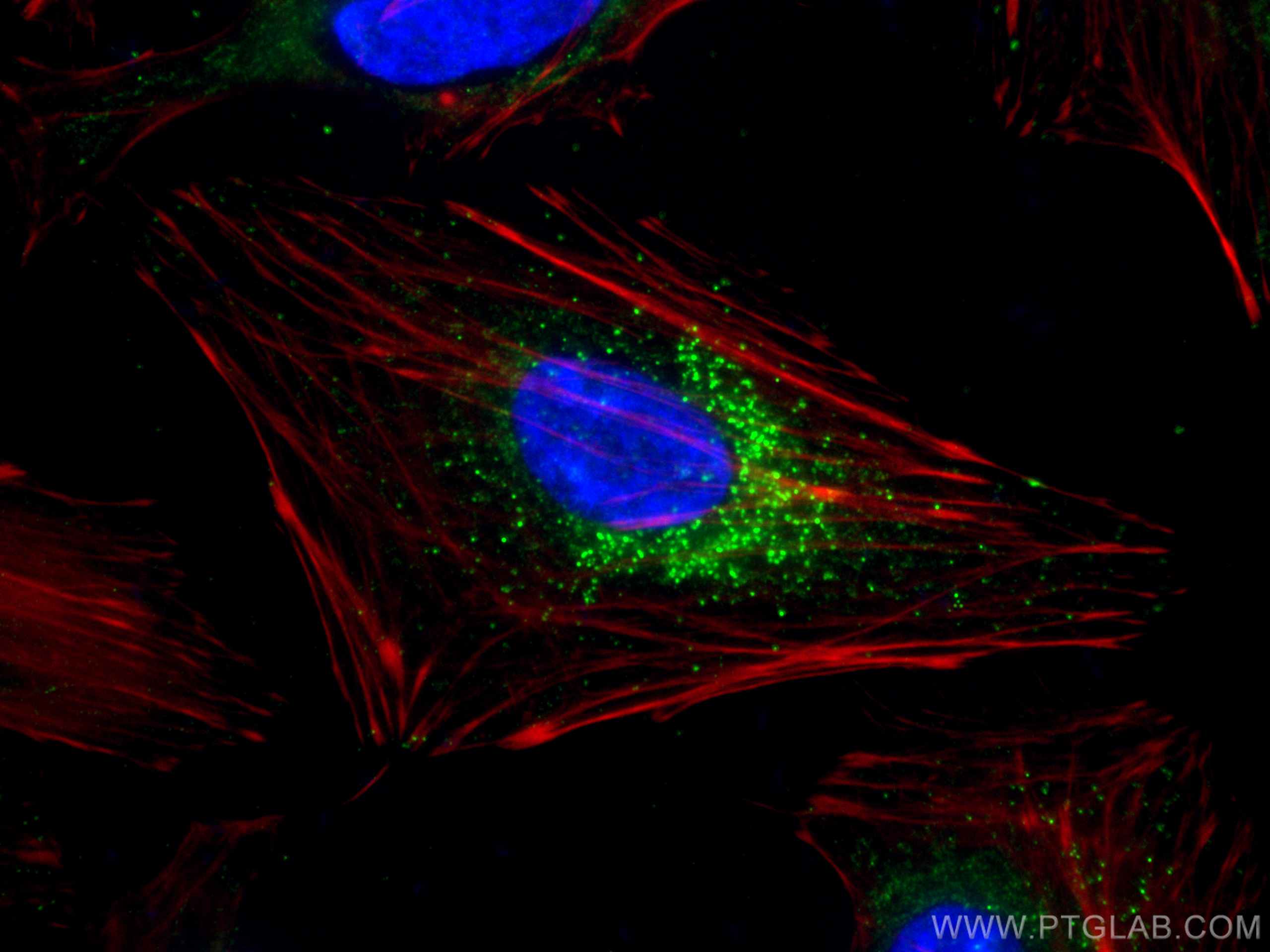- Phare
- Validé par KD/KO
Anticorps Monoclonal anti-TRAF3
TRAF3 Monoclonal Antibody for WB, IHC, IF/ICC, ELISA
Hôte / Isotype
Mouse / IgG2a
Réactivité testée
Humain et plus (1)
Applications
WB, IHC, IF/ICC, IP, CoIP, ELISA
Conjugaison
Non conjugué
CloneNo.
1E3F4
N° de cat : 66310-1-Ig
Synonymes
Galerie de données de validation
Applications testées
| Résultats positifs en WB | cellules A549, cellules HEK-293, cellules Jurkat, cellules NCI-H1299, cellules Raji, cellules U-937 traitées au LPS |
| Résultats positifs en IHC | tissu de lymphome humain, il est suggéré de démasquer l'antigène avec un tampon de TE buffer pH 9.0; (*) À défaut, 'le démasquage de l'antigène peut être 'effectué avec un tampon citrate pH 6,0. |
| Résultats positifs en IF/ICC | cellules HeLa, |
Dilution recommandée
| Application | Dilution |
|---|---|
| Western Blot (WB) | WB : 1:500-1:2000 |
| Immunohistochimie (IHC) | IHC : 1:200-1:800 |
| Immunofluorescence (IF)/ICC | IF/ICC : 1:200-1:800 |
| It is recommended that this reagent should be titrated in each testing system to obtain optimal results. | |
| Sample-dependent, check data in validation data gallery | |
Applications publiées
| KD/KO | See 1 publications below |
| WB | See 13 publications below |
| IHC | See 1 publications below |
| IF | See 3 publications below |
| IP | See 3 publications below |
| CoIP | See 1 publications below |
Informations sur le produit
66310-1-Ig cible TRAF3 dans les applications de WB, IHC, IF/ICC, IP, CoIP, ELISA et montre une réactivité avec des échantillons Humain
| Réactivité | Humain |
| Réactivité citée | Humain, souris |
| Hôte / Isotype | Mouse / IgG2a |
| Clonalité | Monoclonal |
| Type | Anticorps |
| Immunogène | TRAF3 Protéine recombinante Ag12185 |
| Nom complet | TNF receptor-associated factor 3 |
| Masse moléculaire calculée | 568 aa, 64 kDa |
| Poids moléculaire observé | 64 kDa |
| Numéro d’acquisition GenBank | BC075087 |
| Symbole du gène | TRAF3 |
| Identification du gène (NCBI) | 7187 |
| Conjugaison | Non conjugué |
| Forme | Liquide |
| Méthode de purification | Purification par protéine A |
| Tampon de stockage | PBS with 0.02% sodium azide and 50% glycerol |
| Conditions de stockage | Stocker à -20°C. Stable pendant un an après l'expédition. L'aliquotage n'est pas nécessaire pour le stockage à -20oC Les 20ul contiennent 0,1% de BSA. |
Informations générales
TNF receptor-associated factor 3 (TRAF3) has many alternative names including CAP-1, CD40 receptor-associated factor 1(CRAF1), CD40-binding protein(CD40BP) and LMP1-associated protein 1 (LAP1). TRAF3 regulates pathways leading to the activation of NF-kappa-B and MAP kinases, and plays a central role in the regulation of innate immune response. It modulates signaling pathways leading to the production of cytokines and interferon. As an essential constituent of several E3 ubiquitin-protein ligase complexes, TRAF3 promote 'Lys-63'-linked ubiquitination of target proteins. Moreover, TRAF3 undergoes both 'Lys-48'-linked and 'Lys-63'-linked ubiquitination in response to various stimuli and is deubiquitinated by OTUB1, OTUB2 and OTUD5.
Protocole
| Product Specific Protocols | |
|---|---|
| WB protocol for TRAF3 antibody 66310-1-Ig | Download protocol |
| IHC protocol for TRAF3 antibody 66310-1-Ig | Download protocol |
| IF protocol for TRAF3 antibody 66310-1-Ig | Download protocol |
| Standard Protocols | |
|---|---|
| Click here to view our Standard Protocols |
Publications
| Species | Application | Title |
|---|---|---|
Am J Obstet Gynecol microRNA-322 overexpression reduces neural tube defects in diabetic pregnancies | ||
Clin Transl Med Hypoxic colorectal cancer-derived extracellular vesicles deliver microRNA-361-3p to facilitate cell proliferation by targeting TRAF3 via the noncanonical NF-κB pathways. | ||
mBio ASB3 expression aggravates inflammatory bowel disease by targeting TRAF6 protein stability and affecting the intestinal microbiota | ||
Free Radic Biol Med Virtual screening identified natural Keap1-Nrf2 PPI inhibitor alleviates inflammatory osteoporosis through Nrf2-mir214-Traf3 axis. | ||
Front Immunol Swine Acute Diarrhea Syndrome Coronavirus Nucleocapsid Protein Antagonizes Interferon-β Production via Blocking the Interaction Between TRAF3 and TBK1. | ||
Bioorg Chem Synthesis and anti-inflammatory activity of paeonol derivatives with etherized aryl urea by regulating TLR4/MyD88 signaling pathway in RAW264.7 cell. |
